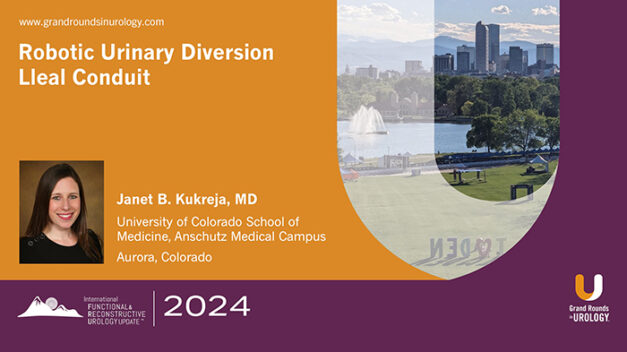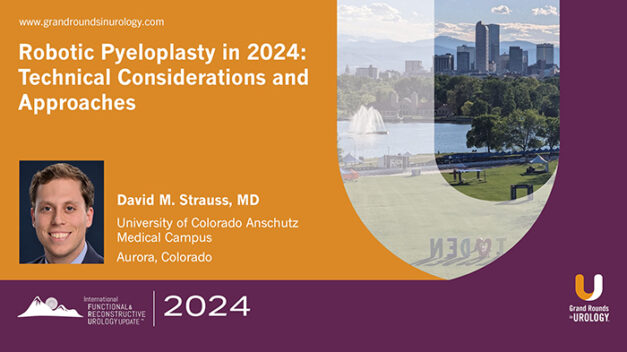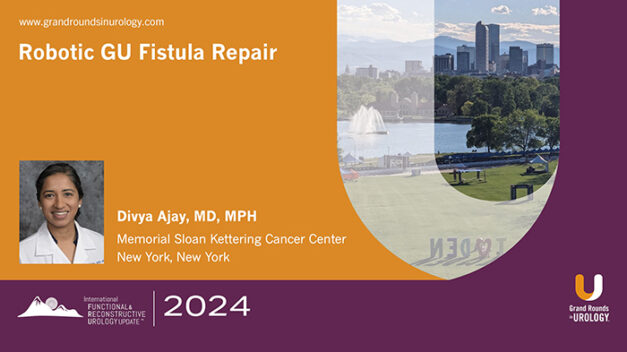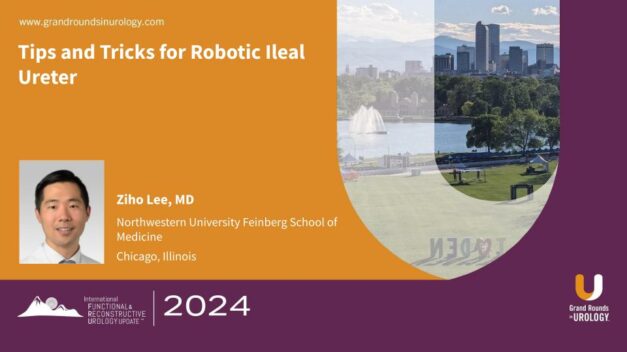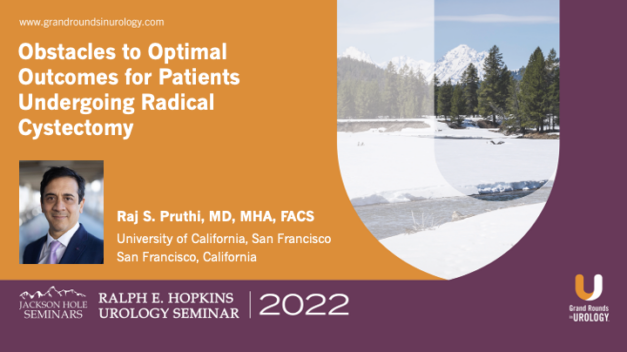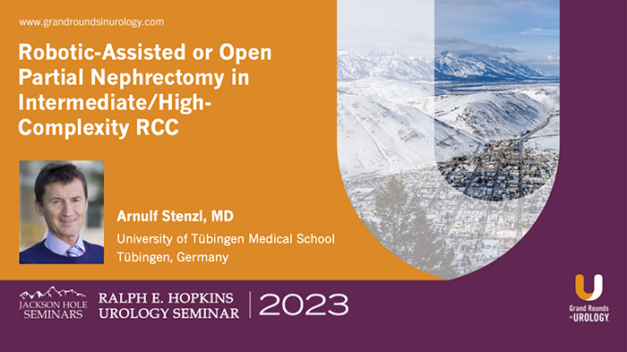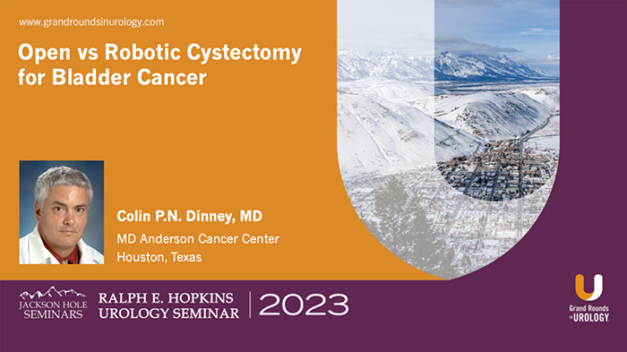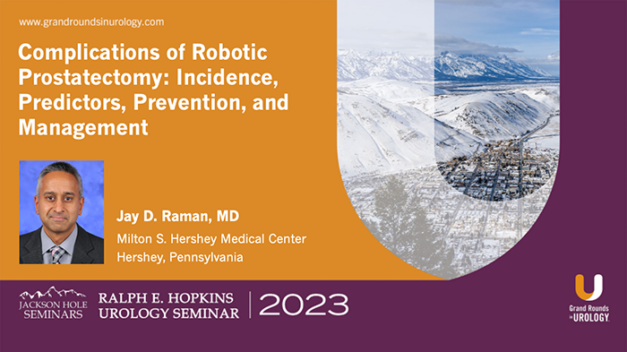Robotic Urinary Diversion Ilial Conduit
Janet B. Kukreja, MD, MPH, FACS, provides a detailed overview of performing robotic-assisted ileal conduit surgery, focusing on practical techniques and strategies for effective urinary diversion.
In this 12-minute presentation, Dr. Kukreja shares a video of one of her procedures, beginning with port placement and tool selection. Using both handheld and robotic staplers, she demonstrates methods to minimize complications and ensure precision during bowel anastomosis. She discusses techniques to avoid complications, such as meticulous ureter preparation, vascular supply preservation, and strategic suture placement. The demonstration covers methods for managing the ureters, including tunneling under the sigmoid and spatulating to ensure optimal flow and reduce the risk of narrowing.
This comprehensive overview provides practical insights into optimizing robotic urinary diversion procedures, making it a valuable guide for surgeons managing complex cases requiring ileal conduits.

